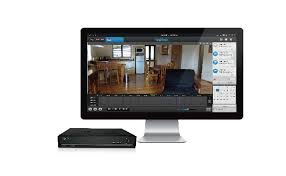What is a Network
What is a Network
In the context of computers and communication, a network is a collection of interconnected computers, devices, and resources that can share information and resources with each other. These connections can be physical wires, fiber optic cables, or even wireless signals.
Here's a breakdown of some key aspects of networks:
Components: A network can include various devices like:
Computers (desktops, laptops, servers)
Printers, Tablets and smartphones
Routers and switches (networking devices)
Storage devices, And more!
Connections: These devices connect to each other using different technologies:
Wired connections: Cables like Ethernet cables establish a physical link between devices.
Wireless connections: Devices connect using Wi-Fi signals, Bluetooth, or cellular data networks.
Resource Sharing: Networks enable devices to share resources like:
Files and data: Users on a network can access and share documents, photos, music, and other files.
Printers and scanners: Network printers and scanners can be shared by multiple users.
Internet access: A network connection can provide internet access to all connected devices.
Types computer networks
There are many ways to categorize computer networks, but here are some common classifications based on size, purpose, and technology:
By Size:
Local Area Network (LAN): A LAN connects devices in a limited geographical area, typically a home, office, school, or even a single building. Devices on a LAN can easily share resources like printers, files, and internet access.
Metropolitan Area Network (MAN): An MAN covers a larger geographical area than a LAN, usually encompassing a city or a metropolitan area. It interconnects LANs within a metro area and can provide high-speed data transfer between them.Wide Area Network (WAN): A WAN spans a large geographical distance, connecting LANs and MANs across continents. The internet itself is a massive WAN that interconnects countless networks worldwide.By Purpose:
Personal Area Network (PAN): A PAN is a small network that connects personal devices within a short range, typically less than 10 meters. Examples include Bluetooth connections for headsets or transferring files between devices close together.
Storage Area Network (SAN): A SAN is a high-speed network designed specifically for connecting storage devices to servers in a data center. It allows for centralized storage and retrieval of data.Enterprise Private Network (EPN): An EPN is a secure network designed for use within a large organization. It allows for secure communication and resource sharing between different departments or offices of a company.
By Technology:
Wired Network: These networks use physical cables, such as Ethernet cables or fiber optic cables, to connect devices. Wired networks generally offer faster speeds and more reliable connections than wireless networks.
Wireless Network: Wireless networks use radio waves or infrared signals to connect devices. Common examples include Wi-Fi networks and cellular data networks. While convenient, wireless networks can sometimes experience slower speeds and interference compared to wired connections.
Client-Server Network: In this model, there are two main types of devices: clients (such as personal computers) that request resources and servers that provide them. Servers are more powerful computers that store data, run applications, and manage network resources.
Peer-to-Peer (P2P) Network: In a P2P network, devices communicate directly with each other without a central server. File sharing applications and some cryptocurrencies often utilize P2P networks.
This is not an exhaustive list, but it covers some of the most common types of networks you might encounter. The specific type of network used depends on its purpose, size, and desired functionality.
Benefits of Networks:
Resource Sharing: Networks allow efficient sharing of resources, reducing costs and improving productivity.
Centralized Management: Network administrators can centrally manage resources and user access.
Improved Communication: Networks facilitate communication and collaboration between users.
Internet Access: Networks provide access to the vast resources of the internet.
Network Security:
Since networks enable sharing, it's crucial to have security measures in place to protect data and devices from unauthorized access, malware, and cyberattacks. Firewalls, encryption, and user authentication are essential for network security.
Networks are fundamental for communication and resource sharing in today's digital world. They connect us to the information and people we need, and underpin many of the technologies we rely on daily.








Comments
Post a Comment